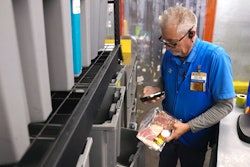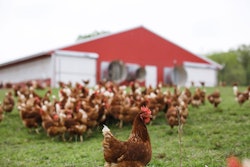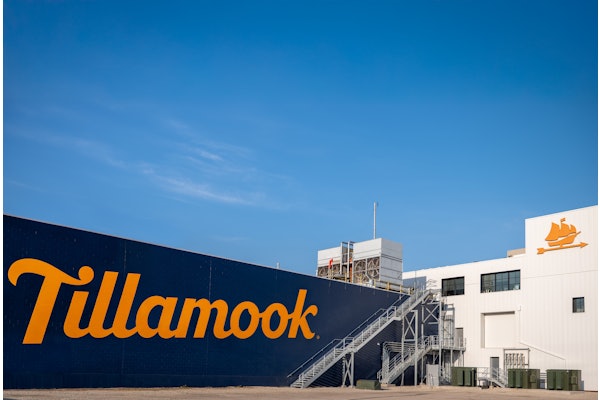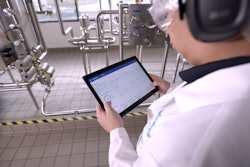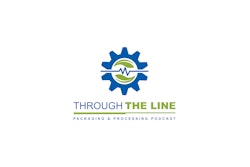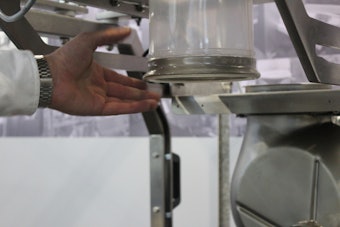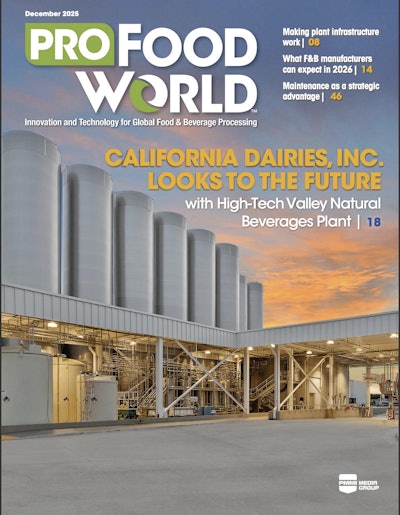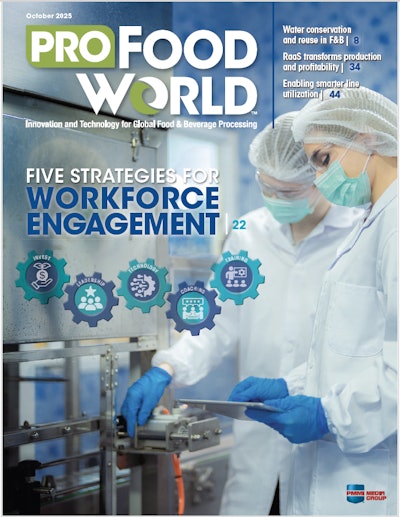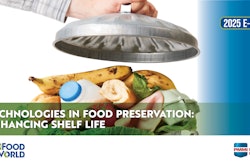It is no secret that spoilage and shelf life are major points of concern for food manufacturers. Processing and storing products at a temperature suitable for freshness and safety is of the utmost importance, and for products perishable at higher temperatures, cold storage is vital.
But preservation of perishable goods is not the only benefit cold storage offers. Kurt Madsen, VP of Cold Storage & Distribution at Hansen-Rice, an architecture, engineering, and construction (AEC) firm, captures the surrounding benefits of low-temperature solutions.
“Cold storage supports geographic market expansion while maintaining quality. Extended shelf life, reduced waste, and improved inventory management are all additional benefits,” Madsen says.
In addition to maintaining product quality, cold storage reduces costs associated with spoilage and provides flexibility in market timing, which allows products to be released at the height of demand, Madsen explains. Part of what provides this market timing flexibility is the shelf life capabilities cold storage provides.
There are several ways to extend product shelf life. However, methods like High Pressure Processing (HPP) are not suitable for products with high air content or delicate structures, such as whole fruits and vegetables. In this case, cold storage would be a better option. Yet, fresh products are not the only ones manufacturers look to preserve.
Fully cooked, ready-to-eat meat and meal production is an area manufacturers are homing in on, and companies are working various ways to extend the shelf life of those products.
For example, in April 2025 Stampede Culinary Partners introduced new Low-Temperature Processing (LTP) technology to pastuerize products without comprising product quality. Stampede says the technology rivals HPP but addresses some limitations. The LTP technology is designed to extend the life of refrigerated meats and meals to between 90 and 180 days, which could be a great supplement to traditional cold storage.
"Our LTP technology represents a major step forward in food safety and quality for the fully cooked meat and meal industry," says Brock Furlong, CEO and President of Stampede Culinary Partners. "We're able to deliver products that are not only safer but maintain exceptional flavor, texture, and shelf life. This innovation underscores our commitment to setting new standards of safety in the industry and providing our customers with the best possible products."
Challenges of cold storage
Despite shelf-life enhancing methods, products will not stay fresh forever. Cold storage has its benefits, but it does not come without challenges.
“[Cold storage] challenges include additional space requirements, systems that require highly trained personnel to operate, and all equipment has an end-of-life expectancy,” says Madsen.
Moreover, all states regulate ammonia (the most common refrigerant) in compliance with local and federal regulations, Madsen explains, and local regulations can vary from state to state, which results in complexities and localized specialization for each application.
While these challenges can be burdensome to food manufacturers, solutions to fit needs exist.
Hansen-Rice experts encourage manufacturers to start with the end in mind. For example, assess whether an expansion to an existing low-temp facility is needed or a new facility needs building. From there, examine the list of a provider offerings and go from there. Companies like Hansen-Rice offer automated handling solutions, industrial refrigeration, electrical systems, mechanical solutions, thermal envelope systems, and building solutions, depending on needs. Solution development does not end there, though.
“Presently, we are working on integrating automation into cold storage facilities. In doing so, we can increase building heights, which in turn increases volume, facilitating more pallet positions for additional products,” Madsen shares. “Another element we are evaluating is the utilization of a rack-supported building. We are finding that once the building's height exceeds 85 feet, the rack-supported structure becomes more cost-efficient.”
With automation being such a prominent part of cold storage solutions, manufacturers might find Hansen-Rice’s 10-question guide on when it’s time to introduce or increase automation solutions helpful.
Trends, AI, and the impact of tarriffs
Patterns are picking up in the cold storage space, and two trends stand out among the crowd.
“First, energy efficiency and the substantial evolution of equipment over the last 20 years, including greener practices and energy-efficient technologies. Second, the push toward automation in frozen facilities, which is costly but eliminates workforce requirements while improving throughput,” Madsen says.
It is no surprise to see a push for more sustainable practices, and the benefits of automation make its traction gain understandable. However, expanded use of specific refrigerants is another thing Madsen sees gaining traction.
“Another interesting trend worth noting is the use of alternative refrigerants over ammonia. With European food processors expanding in America, we are seeing increased utilization of other natural refrigerants such as carbon dioxide,” the VP of Cold Storage shares. “As more and more operators do not want to deal with the regulations and hazards that accompany ammonia, we see some companies gravitating toward synthetic refrigerants.”
Speaking of regulations and their impact on operations, tariffs are something cold storage solutions providers are paying attention to. Yet, providers continue to monitor developments and are preparing the best they can.
“Presently, tariffs are filling the spotlight, and we are evaluating our supply chain, developing ways to work both with and around these tariffs to optimize our deliverables. We are also seeing extended lead times for various equipment deliveries and are working with our vendors to maximize utilization and resources upfront so as not to delay projects,” says Madsen.
Overall, Madsen believes that cold storage solutions are an important part of an overall strategy to mitigate supply chain risks and improve speed to market. While trends like automation can be helpful, Madsen suggests approaching solutions with tact.
“Investments in automated cold storage solutions can deliver sustainable ROI-driven results, but they should be preceded by careful cost-benefit analysis by an automation solutions expert to validate the business case,” Madsen says.
Collaboration between manufacturers and solution providers is important, and with the right partnership, companies should be able to make improvements that are worthwhile.
“Early partner selection is vital,” Madsen says. “Decisions around OEM and technology selection and procurement should be fully integrated with utilities, permitting, facility design, construction, and commissioning. Your planning and development team guiding the project should fully understand how all of these systems work together to deliver a strong return on investment.”

